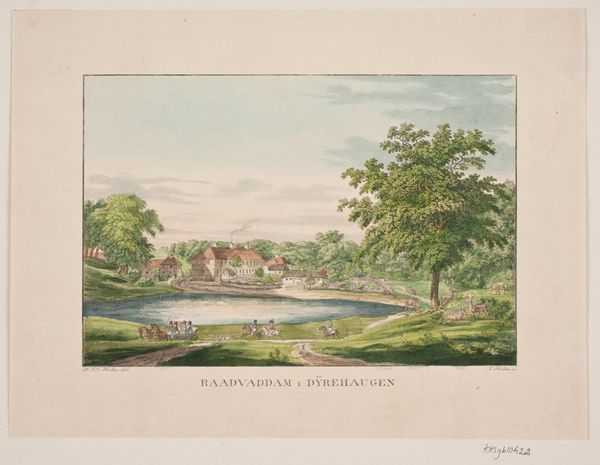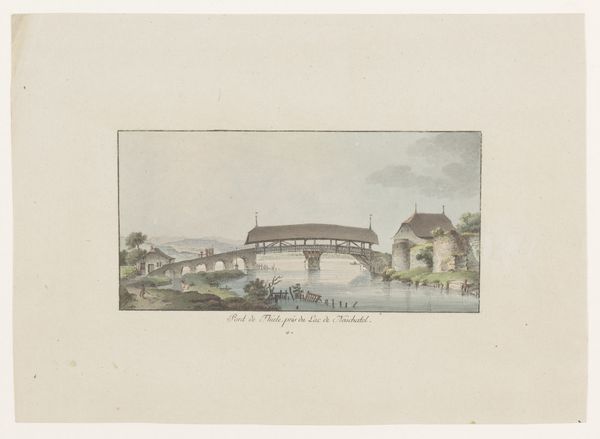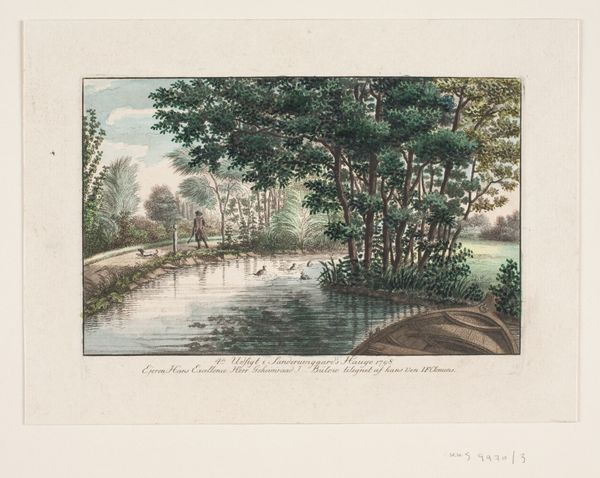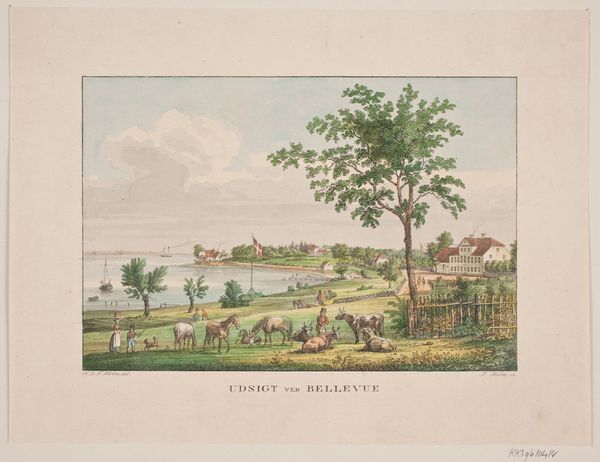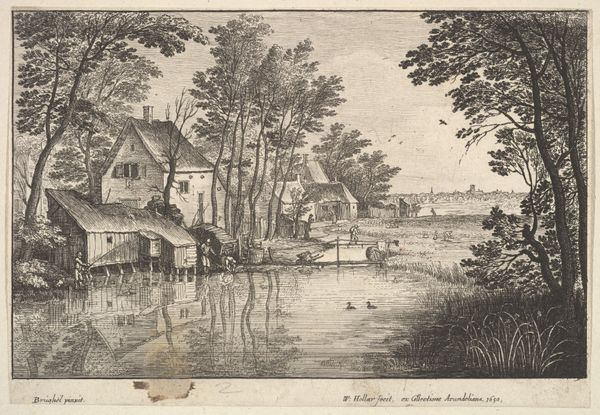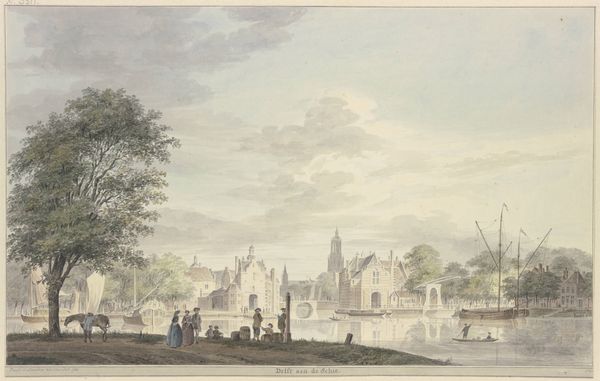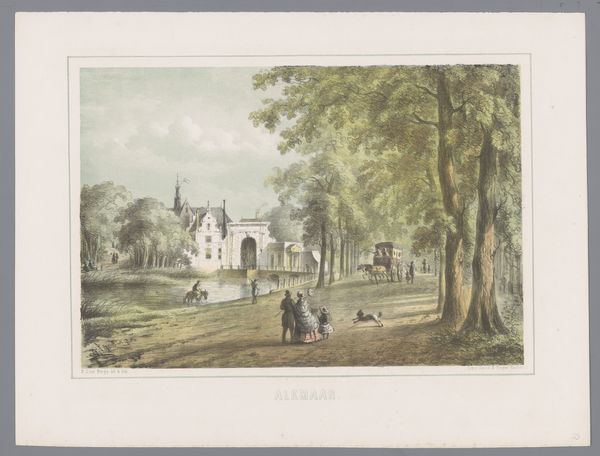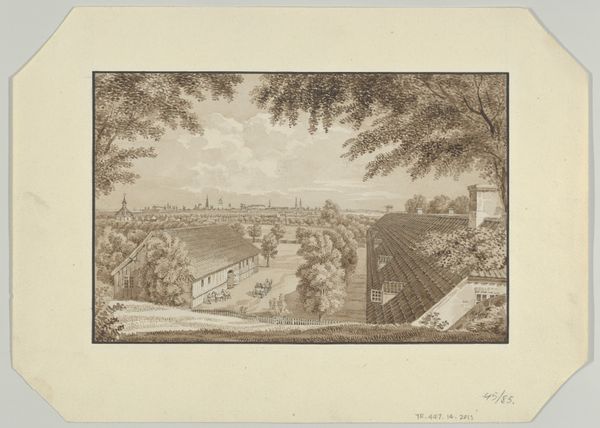
print, engraving
#
aged paper
#
toned paper
#
light pencil work
#
water colours
#
yellowing background
# print
#
white palette
#
personal sketchbook
#
watercolour illustration
#
soft colour palette
#
engraving
#
watercolor
Dimensions: 158 mm (height) x 215 mm (width) (bladmaal)
Curator: Welcome, everyone. Today, we are looking at "Parti af Frederiksdal," an 1838 print attributed to Jens Holm. It seems to combine engraving and watercolor, resulting in a really delicate aesthetic. What are your first thoughts? Editor: There's a gentle harmony to it, almost dreamlike. The soft washes of color lend a sentimental aura to the scene; like a faded memory. The composition is traditional, with careful groupings of figures. But what catches my eye is its presentation of leisurely domesticity. Curator: Precisely. Considering the time, these prints, often hand-colored, catered to a burgeoning middle class eager for representations of an idyllic Danish landscape. The act of engraving itself allowed for reproducibility, making art accessible on a new scale. Note also how labor is represented or, rather, carefully concealed in favour of pure idyllic pleasure. Editor: Yet the symbolic resonance of Frederiksdal persists! The setting presents this potent symbol of national pride for the Danes. That mill is rendered very specifically – I bet local populations invested it with significant symbolic heft related to local economics and identity. Curator: Definitely. This focus underscores the material conditions that give rise to art—consider paper production and distribution—while at the same time being embedded within local networks of representation and economy. One informs the other, inextricably. I'm also quite curious about the pigments they would have used to achieve this palette. What level of rarity or difficulty would come with specific choices? Editor: That pastel scheme reinforces associations with serenity, health, and the perceived harmonious relationship between humans and their environment. We see this reflected in the positioning of that group of figures enjoying the rural scenery: images celebrating cultural belonging often leverage gentle pastoral settings and leisurely enjoyment as crucial signifiers. Curator: So, while on the surface, the scene looks purely bucolic, its creation and distribution speaks volumes about industrial advancement and the shifts in how people accessed and valued images in 19th-century Denmark. Editor: Agreed; seeing both the surface tranquility and those undertones helps contextualize its cultural position. Curator: It really exemplifies the way materiality shapes—and is shaped by—the stories we tell ourselves about who we are as a people. Thank you for sharing that view. Editor: Thanks for highlighting its underpinnings; that makes all the difference.
Comments
No comments
Be the first to comment and join the conversation on the ultimate creative platform.
